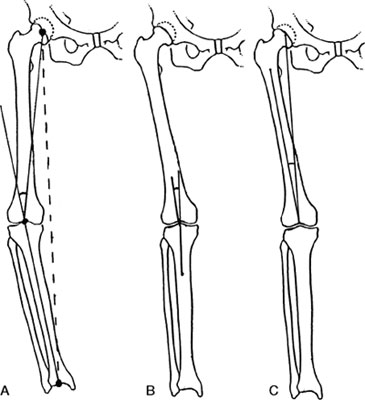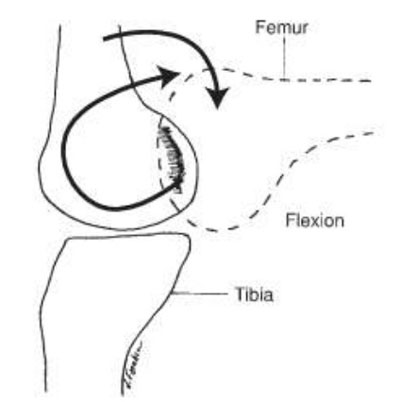Biomechanics of Knee Joint

Mechanical Axis of the Lower Limb:
Mechanical Axis of the lower leg is defined as a line from the center of the femoral head to the center of the ankle. In a Normal Knee the Mechanical Axis of the limb, should pass through the center of the Knee. In a Varus Knee, the Mechanical Axis of the limb passes medially (inner side) to the center of the Knee. In Valgus Knee the Mechanical Axis passes laterally (outer side) to center of the Knee.
Tibiofemoral Angle is the angle formed between the line passing through the center of Tibia and the line passing through the center of Femur. This angle is usually 6 degree of Valgus.
The deviation angle is formed by a line from the center of the Femoral Head to the center of the Knee and a line from the center of the Knee to the center of the ankle. The Tibiofemoral Angle is formed by the intersection of the lines along the center of the Femoral Shaft and the center of the Tibial Shaft.
Roll Back and Sliding of the Knee Joint:
Flexion & Extension of the Knee Joint are not simple hinge movements that occur at the Elbow Joint. This is due to the contour of Femoral & Tibial Condyles. The Flexion & Extension in the Knee Joint do not occur about a fixed transverse axis of rotation but rather about a constantly changing center of rotation, that is, Polycentric Rotation.
On plotting the path of this changing center of rotation a J shaped curve about the Femoral Condyles is formed.
- For example,
When Knee is in Full Flexion, the back portions of Femoral Condyles are in contact with the back portions of the Tibial Condyles; when the Knee is extended, Femoral Condyles roll on Tibial Condyles & Menisci. This movement resembles that of a rocking chair and there is also sliding of the Femur Backward.
As the Knee continues to extend, the shorter and more highly curved lateral (outer) Condyle exhausts its articular surface and is checked by ACL, whereas larger & less curved Medial (inner) Condyle continues its forward roll & skids backward, assisted by tightening of PCL.


This results in Medial Rotation of femur that tightens Collateral Ligaments, and the joint is known as "screw home;"
The Flexion of the Extended Knee is preceded by lateral rotation of the Femur (or medial rotation of the Tibia), usually produced by Popliteus Muscle.
This rotation relaxes the tension on the Collateral Ligaments sufficient to permit Flexion.
The exact ratio of rolling to gluiding differs between individuals and does not remain constant throughout all degrees of Flexion.
Asymmetrical Femoral Condyles work in tandem with the PCL to facilitate normal asymmetric rollback of the femur on the Tibia during Flexion.
During Normal Gait, the Tibia undergoes internal (inward) rotation during swing phase and external (outward) rotation during stance phase.
